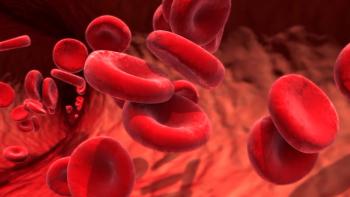
IVIG Can Cause Kidney Function Decline, Thromboembolism in Patients With Dermatological Conditions
Key Takeaways
- IVIG is effective for autoimmune dermatologic conditions but can cause serious adverse events, including reduced kidney function and thromboembolism.
- Significant eGFR decline was observed in patients receiving three or more IVIG cycles, with a 20% drop in 22.7% of these patients.
Intravenous immunoglobulin (IVIG) treatment for dermatologic conditions shows effectiveness but poses risks of kidney decline and thromboembolism, necessitating careful monitoring.
In some patients with dermatologic conditions receiving intravenous immunoglobulin (IVIG), adverse events (AEs) such as a decline in estimated glomerular filtration rate (eGFR)—a key indicator of kidney function—and thromboembolism occurred. These results, found in a retrospective study and published by investigators in Archives of Dermatological Research, indicate that patients in this population receiving IVIG infusions should be closely monitored for AEs, especially during the initial infusion cycles.1
IVIG Can Cause Adverse Events Despite Effectiveness
IVIG has shown effectiveness in numerous autoimmune dermatologic conditions, including dermatomyositis, lupus erythematosus, and
Still, the seriousness of potential IVIG-related complications necessitates thoughtful monitoring and careful management of infusions. Studies of patients with nondermatological conditions have found an approximately 1 in 6 incidence of the development of a severe thromboembolic event following IVIG treatment. Most pertinently, there is an overall lack of literature describing thromboembolic events in patients specifically with autoimmune bullous disease, who may be at heightened risk due to inflammation, advanced age, or the use of systemic steroids.1,4
Investigators Find Reduced eGFR, Increased Thromboembolism Risk
The study population featured 48 patients who had previously received at least 1 cycle of IVIG treatment at 2 g/kg body weight for dermatological indications between 2017 and 2024 at the investigator’s university hospital. Patients were evaluated for serum immunoglobulin A levels, baseline kidney functions, and hepatitis serology tests prior to initiating IVIG. A cutoff value of greater than or equal to 20% decline in eGFR from baseline was used to measure change following treatment, and thromboembolic events during and after IVIG administration were recorded, according to the investigators.1
eGFR values did not change significantly following the last treatment compared with before treatment for patients receiving 1 or 2 cycles of IVIG. However, in patients who received 3 or more cycles of IVIG, eGFR values significantly decreased following the last treatment compared with before (107 ml/min vs 100 ml/min, P = .001). Importantly, there was a statistically significant positive correlation (r = .537, P < .001) between creatine value changes and total number of IVIG cycles, while there was a negative correlation between eGFR level changes and total IVIG cycles (r = -.540, P < .001). The investigators also found that, in 5 (22.7%) of the 22 patients who received 3 or more IVIG cycles, there was at least a 20% drop in eGFR; a univariate analysis indicated that cumulative IVIG dose was the sole predictor of such a decline.1
Moving to an analysis of thromboembolic events, the investigators found thromboembolism related to IVIG treatment in 5 (10.4%) patients. Notably, 4 of the 5 thromboembolic events occurred in the initial cycles of IVIG administration. The investigators discussed how monitoring should be tailored towards detection of possible thromboembolisms in the beginning of IVIG treatment and that detecting the cumulative impact of IVIG on kidney function should be implemented into care strategies for such patients.1
“We suggest that patients should be closely monitored during IVIG infusion, especially during the initial cycles, regarding the signs of thromboembolic events,” the study authors wrote in their conclusion. “Furthermore, those undergoing long-term IVIG therapy should be closely observed for cumulative impacts on renal function.”1
REFERENCES
1. Avci C, Talibova A, Fetil E, et al. The impact of intravenous immunoglobulin on kidney functions and thromboembolic events in dermatology patients. Archives of Dermatological Research. 2025;317(636). doi:10.1007/s00403-025-04160-8
2. Halpern L. Intravenous immunoglobulin shows efficacy as adjunctive therapy for treatment of pyoderma gangrenosum. Pharmacy Times. Published January 4, 2025. Accessed May 6, 2025. https://www.pharmacytimes.com/view/intravenous-immunoglobulin-shows-efficacy-as-adjunctive-therapy-for-treatment-of-pyoderma-gangrenosum
3. Halpern L. Patients with juvenile dermatomyositis treated with IVIG had no increased risk of thromboembolic events. Pharmacy Times. Published January 31, 2025. Accessed May 6, 2025. https://www.pharmacytimes.com/view/patients-with-juvenile-dermatomyositis-treated-with-ivig-had-no-increased-risk-of-thromboembolic-events
4. Ramirez E, Romero-Garrido JA, Lopez-Granados E, et al. Symptomatic thromboembolic events in patients treated with intravenous-immunoglobulins: Results from a retrospective cohort study. Thrombosis Research. 2014;133(6):1045-1051. doi:10.1016/j.thromres.2014.03.046
Newsletter
Stay informed on drug updates, treatment guidelines, and pharmacy practice trends—subscribe to Pharmacy Times for weekly clinical insights.








































































































































































































